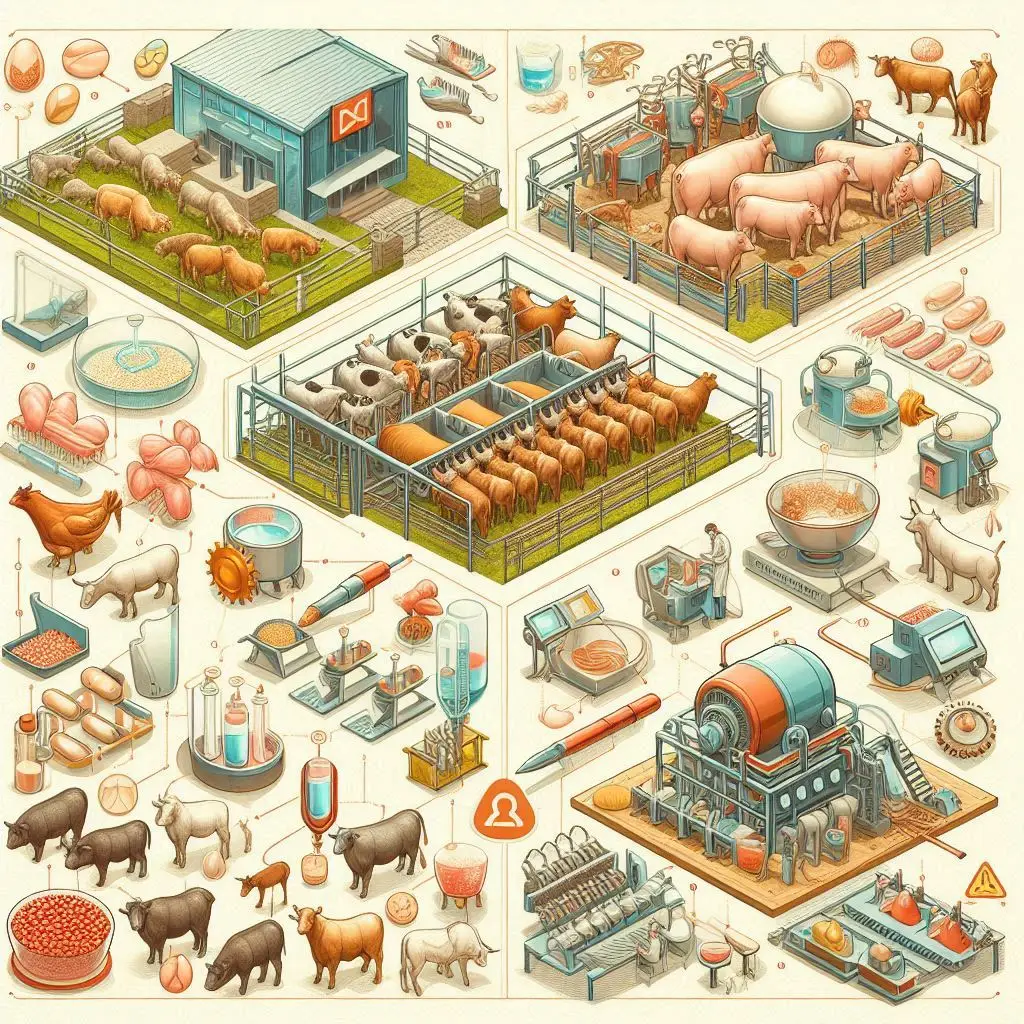Independent Culling Levels

Introduction to Independent Culling Levels
Independent Culling Levels (ICL) is a vital concept in the field of animal and plant breeding. It serves as a method for selecting individuals based on their performance across multiple traits. This approach helps breeders maintain high standards in their breeding programs. By establishing minimum acceptable standards for each trait, ICL ensures that only the best individuals are chosen for reproduction.
Why Use Independent Culling Levels?
Breeding programs aim to improve specific traits within a population. These traits can include growth rate, disease resistance, and reproductive performance. ICL allows breeders to focus on these traits without compromising overall genetic diversity. For more information on the importance of genetic diversity in breeding, you can read more here.
How Independent Culling Levels Work
Setting Minimum Standards
In ICL, breeders set minimum acceptable standards for each trait they evaluate. For instance, if a breeder is assessing weight gain in livestock, they might establish a minimum weight gain per week. If an animal does not meet this standard, it is culled from the breeding program.
Evaluating Multiple Traits
Breeders can evaluate several traits simultaneously. For example, a breeder may assess both growth rate and disease resistance at the same time. This simultaneous evaluation helps ensure that individuals excel in all important areas.
Sequential Selection Process
Alternatively, breeders can choose to evaluate traits one at a time. This method allows for a more focused approach but may require more time and resources. The choice between simultaneous or sequential evaluation often depends on the specific goals of the breeding program.
Advantages of Using ICL
1. Simplicity and Efficiency
One of the main advantages of ICL is its simplicity. Breeders can easily implement this method without needing complex calculations or software tools. This ease of use makes ICL accessible to many breeders, from small farms to large agricultural enterprises.
2. High Heritability Estimates
Research indicates that using ICL can lead to high heritability estimates for selected traits. For example, studies have shown heritability estimates reaching up to 90% for certain characteristics under optimal conditions. This means that the traits being selected are likely to be passed on to future generations.
For more insights into heritability in breeding programs, check out this article here.
3. Flexibility in Trait Selection
ICL provides flexibility in selecting traits based on specific breeding goals. Breeders can adjust their minimum standards as needed, allowing them to adapt to changing market demands or environmental conditions.
Disadvantages of Independent Culling Levels
1. Potential Loss of Valuable Genetics
One significant drawback of ICL is that it may exclude genetically valuable individuals who do not meet the minimum standards in one trait but excel in others. This exclusion can lead to a loss of genetic diversity within the breeding population.
2. Less Comprehensive than Index Selection
While ICL is effective, it may not be as comprehensive as other methods like index selection. Index selection considers overall performance across multiple traits rather than setting minimum thresholds for each one.
For a detailed comparison between ICL and index selection, refer to this resource here.
Practical Applications of ICL
Livestock Breeding
In livestock breeding, ICL is widely used to improve various traits such as growth rate, feed efficiency, and reproductive performance. For instance, poultry breeders may set culling levels for egg production and body weight simultaneously to enhance both traits in their flocks.
Aquaculture Practices
Aquaculture benefits from ICL as well. Fish farmers often set culling levels based on growth rates and health indicators to ensure that only the best-performing fish are bred.
Case Studies: Success Stories with ICL
Case Study 1: Poultry Breeding Programs
A poultry breeding program implemented ICL by setting minimum standards for egg production and body weight in hens. By using this method, the program successfully increased both egg yield and overall flock health over several generations.
For more insights into poultry breeding strategies, check out this article here.
Case Study 2: Dairy Cattle Selection
In dairy cattle selection, farmers applied ICL by establishing culling levels for milk production and somatic cell count (a measure of udder health). This approach led to healthier cows and increased milk yield over time.
Learn more about dairy cattle genetics here.
Best Practices for Implementing ICL
Define Clear Objectives
Before implementing ICL, breeders should define clear objectives for their breeding program. Understanding what traits are most important will guide the establishment of minimum standards.
Regularly Review Standards
Breeders should regularly review and adjust their culling levels based on new data or changes in market demands. This adaptability helps maintain the effectiveness of the breeding program over time.
Use Accurate Data Collection Methods
Accurate data collection is crucial when evaluating traits under ICL. Breeders should invest in reliable measurement tools and techniques to ensure that their assessments are precise.
Conclusion: The Future of Independent Culling Levels
Independent Culling Levels remain a powerful tool in breeding programs across various fields, including agriculture and aquaculture. By focusing on specific traits while maintaining genetic diversity, breeders can enhance the quality of their stock effectively.
As advancements in genetic research continue, methods like ICL will evolve further, allowing breeders to make even more informed decisions about their selections.
More from Genetics and Animal Breeding:
Quantitative and Qualitative Traits






Responses